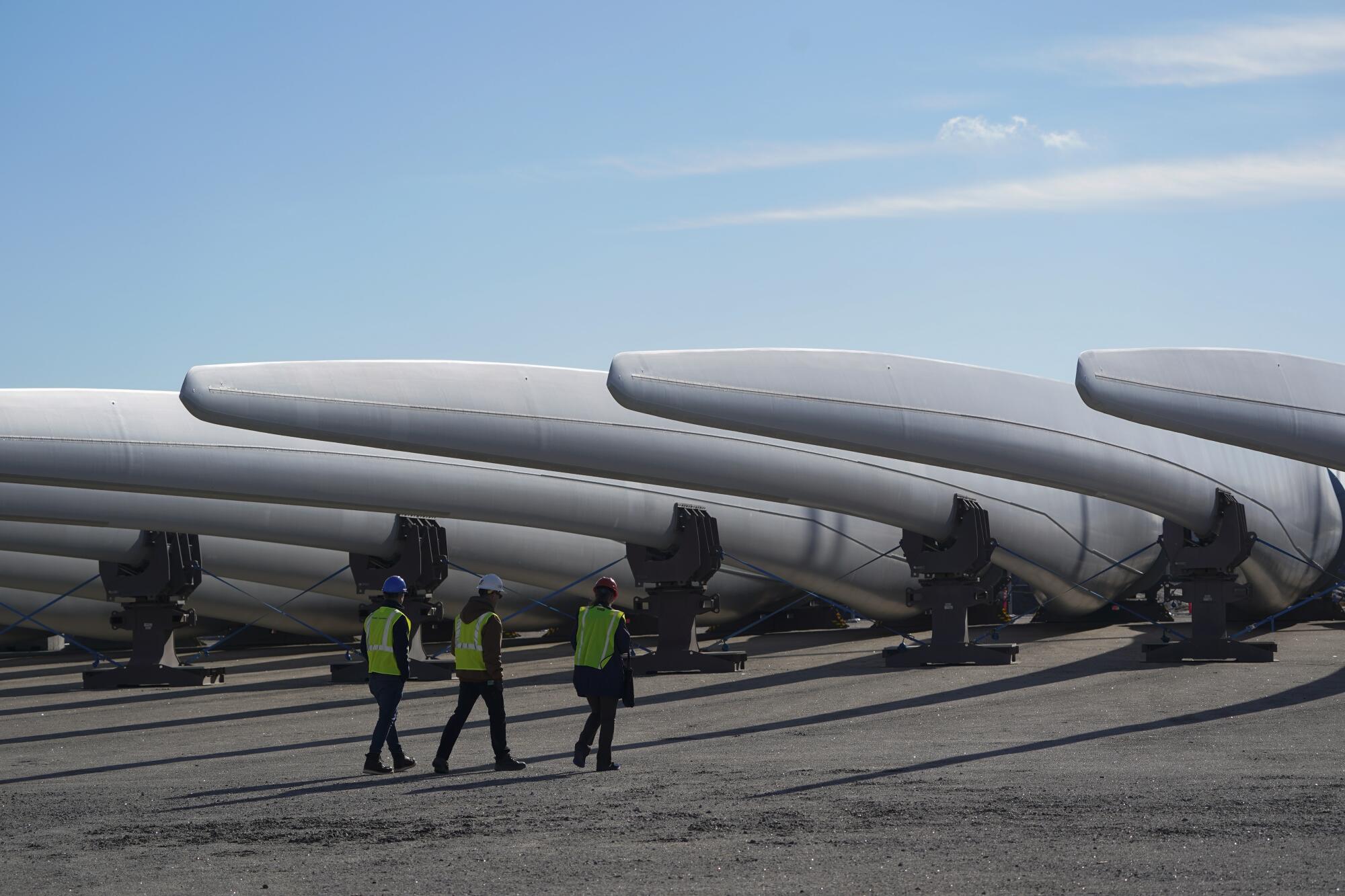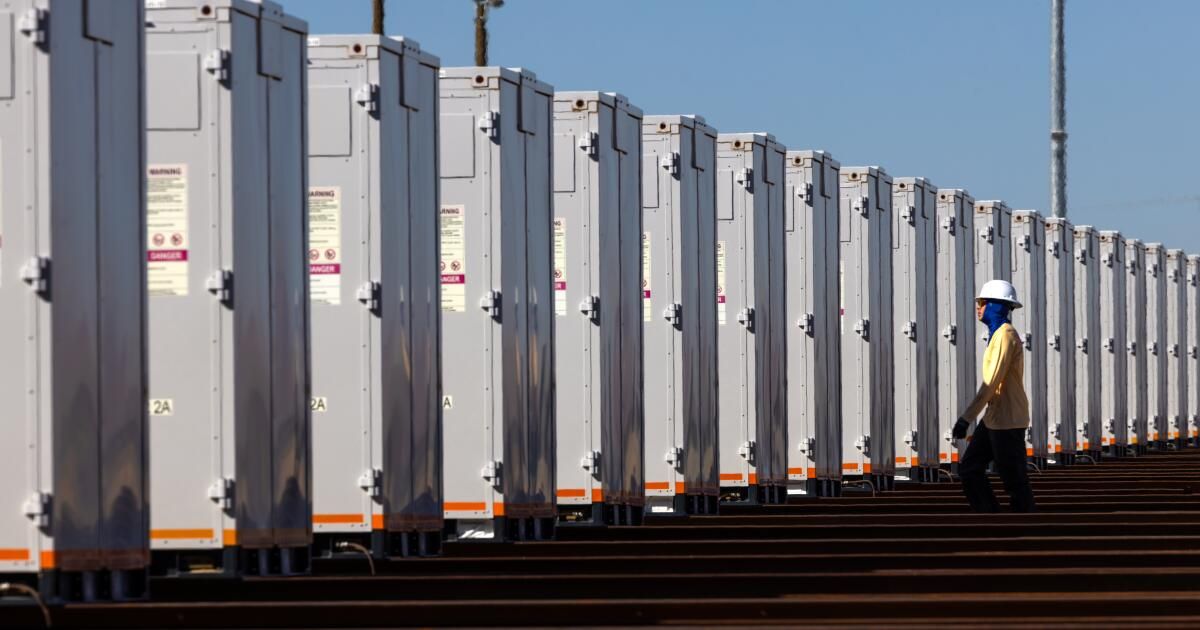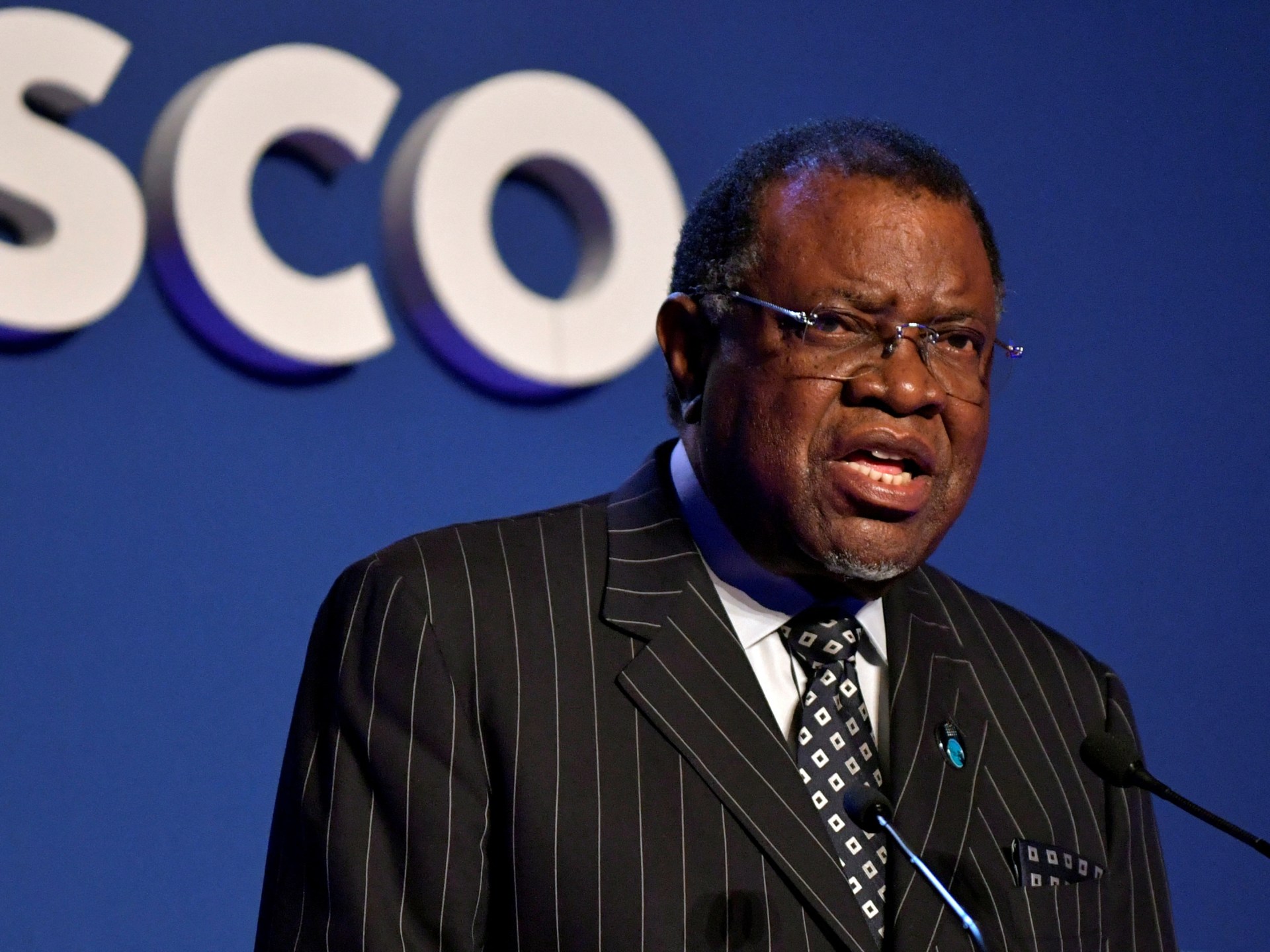California is among nine U.S. states and territories selected to receive $60 million in federal funding as part of a significant effort to build a climate-ready workforce nationwide.
Investment from the U.S. Department of Commerce and the National Oceanic and Atmospheric Administration will support workforce development efforts in coastal and Great Lakes communities across the country, including $9.5 million to establish the Ready Jobs Council for Los Angeles County Climate at Long Beach City College.
The LBCC program will help develop training, internships and job placement services for occupations in the water and solar energy sectors that demand workers, officials said. Similar programs were announced Tuesday in American Samoa, Alaska, Washington, Texas, Louisiana, Massachusetts, Ohio and Puerto Rico and the US Virgin Islands.
Investment in public, private and educational organizations “will train workers on our coasts and help them find good-paying jobs that strengthen climate resilience and local economies,” reads a statement from US Secretary of Commerce Gina Raimondo. “Climate change is accelerating the need for a new generation of skilled workers who can help communities address a wide range of climate impacts, including sea level rise, flooding, water quality issues and the need for solutions such as renewable energy.
Aggressive and impactful reporting on climate change, the environment, health and science.
The program is funded by President Biden's landmark Inflation Reduction Act and includes $50 million in direct grants and $10 million in technical assistance to support recipients. Federal officials told reporters they received 95 applications for the program requesting a total of $615 million in funding, or more than 10 times the amount available.
“Even with this generational investment being made, we think it shows the need and demand in communities across the country for programs like this,” said Jonathan Pennock, director of NOAA's National Sea Grant College Program, which is helping to manage the initiative.
The program comes at a key time for the country, which continues to experience worsening climate impacts such as extreme wildfires, flooding, heat and storms. Las Vegas, Phoenix and Albuquerque are currently suffering from sweltering heat amid an unprecedented heat wave, while parts of Florida are bracing for a month's worth of rain in just a few days.
California has set ambitious goals to adapt to climate change, including cutting greenhouse gas emissions nearly in half by 2030 and achieving carbon neutrality by 2045, but achieving it will require major reforms of its sectors. transportation and energy, as well as improvements and investments in manufacturing and infrastructure.
A 2021 study of California's clean energy transition found that the investments needed to meet and strengthen the state's goals could create 1 million new jobs through 2030. About 14% of those jobs are related to solar energy, 5% with onshore wind energy and 4% with wastewater. , among other sectors.
These efforts are urgently needed: In the 1980s, the United States averaged a billion-dollar climate disaster every four months, according to NOAA. Nowadays, these events occur once every three weeks.

Wind turbine blades from South Fork Wind, an offshore wind farm, are stored at State Pier in New London, Connecticut, in December 2023.
(Seth Wenig/Associated Press)
“It's a stark reminder of the growing risks we face,” said Jainey Bavishi, undersecretary of commerce for oceans and atmosphere and deputy administrator of NOAA. “Demand for adaptation and resilience solutions is increasing, and with that comes increasing demand for a climate-ready workforce trained to help communities and businesses prepare for the effects of climate change.”
Bavishi noted that since 2018, the number of climate adaptation plans at the municipal and state level has increased by 32%, “but translating them into action fairly and effectively is proving to be more difficult.” One barrier is the lack of a diverse and skilled workforce, he said.
What's more, the Fifth National Climate Change Assessment, released in November, highlighted the ways in which historically underserved communities, communities of color, and tribal and indigenous communities face disproportionate risks and impacts from climate change. The same communities are also often on the margins of the labor market.
The workforce initiative is intentionally reaching out to those communities with training opportunities, Raimondo told reporters Tuesday. Support services, such as child care and transportation, are components of the initiative that will help ensure “people can complete training, graduate, and get high-quality, well-paying jobs.”
“We need to be clear about the need to prepare workers with skills for jobs and connections to real jobs, and that's what this initiative is designed to do,” he said.
The $9.5 million program at Long Beach City College represents the second-largest investment, trailing only the Greater Boston Coastal Resilience Jobs Alliance in Massachusetts, which will receive $9.8 million for a similar effort.
LBCC will serve as the “backbone” for the establishment of the Los Angeles County Climate Jobs Council, an expansive project that will convene parts of the public, private, nonprofit, tribal and educational spheres to improve the county's workforce with climate resilience and develop training. and job placement in all sectors of the county, university officials said.
“While the repercussions of climate change may be inevitable, we still have the power to lessen the severity of the results by changing both our collective behavior and our infrastructure,” read a statement from LBCC President Superintendent Mike Muñoz. “Our students will be at the forefront of developing and implementing innovative solutions that are essential to maintaining the health of our planet and ensuring a resilient future for all.”
LBCC also announced this week a $750,000 grant from the California Municipal Utilities Association's water, wastewater and energy workforce development program. Both grants “will address the unique needs of those communities most disproportionately affected by climate change and connect underserved and low-income workers with training and job placement in climate-resilient careers,” school officials said.
The federal program will begin six to nine months after the funds are received, according to the university. NOAA officials said their goal is to distribute all funds to awardees by Aug. 1.
The Biden administration has already created more than 270,000 clean energy jobs across the country, but officials stressed there is still work to be done.
“The impacts of the climate crisis are diverse, and the skills needed to empower workers and communities are diverse as well,” Raimondo said. “If we want to ensure that American workers can take advantage of the jobs we are creating by addressing climate change, then we have to be proactive in training people so they have the skills they need to get the jobs available. .”
Newsletter
Towards a more sustainable California
Get Boiling Point, our newsletter exploring climate change, energy and the environment, and be part of the conversation and the solution.
You may occasionally receive promotional content from the Los Angeles Times.












